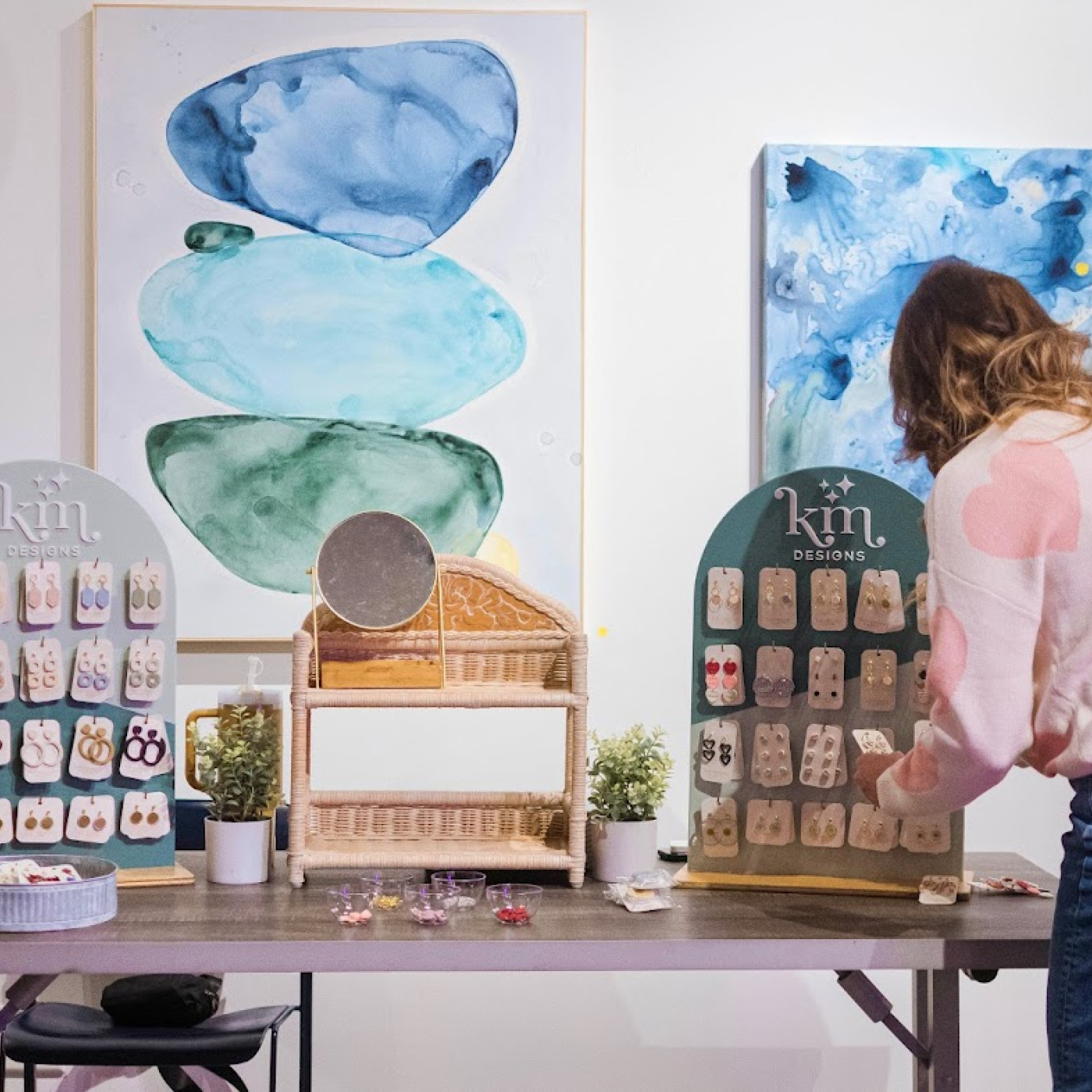Lulls in a Show Be Productive During Such Moments

Slow periods can be challenging for artists and organizers. Many factors can contribute to a lull. How an artist chooses to use that time can make a significant difference in attracting customers and maintaining a professional presence.
One of the most effective things an artist can do is to demonstrate their craft. Demonstrations have a powerful effect — when customers see artisans actively creating work in their booths, it naturally draws them in and invites conversation.
It opens the door for questions, sparks curiosity, and helps customers connect more deeply with the art and the artist. Seeing even a small part of the creative process makes a big difference. Customers are far more likely to make a purchase when they have witnessed something being made — even if it is a single component or a sample technique.
Full demonstrations are not always necessary or practical. Some artists can showcase a portion of their process. A jeweler might craft clasps or assemble small elements. A mixed media artist could experiment with layering papers or materials in a small area of the booth — work that might later become part of a larger piece. Small, thoughtful demonstrations like these enrich the customer experience and help highlight the value and originality of handmade work.
Artists who work on a larger scale can prepare a small slow-time kit. A painter might bring along a sketchbook with pastels, paints, or pencils to work on new ideas. A decorative painter I know keeps a compact kit just for shows — allowing her to experiment with small designs and new brushstrokes without needing her full setup.
Visual artists can sketch or brainstorm in a notebook — it is creative, engaging, and shows customers you are passionate about your work. Being proactive during quiet times is not about assuming the show will be slow but about being prepared to look engaged, creative, and professional.
Productive things to do include working on or rearranging your display, looking over sales figures, photographing your work with different backdrops, and taking updated photos of your booth for future show applications. Other ideas are to count remaining inventory, make or update price tags, assemble pre-packs with tissue and shopping bags ready to go, and review your calendar and prep lists for upcoming shows.
These activities keep you focused and make your booth feel active and inviting. During slow times — when aisles are less crowded — customers see your booth and you from a greater distance. If you are hunched over your phone or deep into a novel, it sends the message that you are disengaged, and some visitors may pass you by.
Remember to stay active, look involved, and show customers you are present and proud of your work. Do not get caught looking like you have checked out. Your next sale might be steps away.
Late in the day at an event when the crowd had thinned out, I noticed an artist step out the building’s back door for a few minutes while a neighboring artist kept an eye on his booth. A short time later, he returned with a handful of sticks he had gathered and immediately began incorporating them into the arrangements he was creating in his booth. That is a great example of making productive use of a quiet moment!
Another artist I know uses slower times to stay ahead on logistics for upcoming events. She reviews her checklist. Has she confirmed electricity for her next show? Are hotel reservations in place? Does the venue provide pipe and drape, or does she need to bring her own?
While this may involve checking her phone occasionally, it is done with purpose and professionalism — never giving the impression she is browsing online or playing games. Staying engaged and productive during slower periods not only makes the time feel more worthwhile — it also keeps your booth looking active and professional to potential customers walking by.
Things not to do during lulls are to read a book, be glued to the phone, begin packing things, vanish from the booth for lengthy periods, and fall asleep. How we present ourselves, even during slower times, shapes an event’s impression.
When an artist begins packing up early, it can unintentionally affect a show’s entire atmosphere. A few years ago, one artist started breaking down their booth about 40 minutes before the official end time.
Seeing this, four nearby artists followed suit, assuming the event was wrapping up. Before long, several more in the same row began doing the same — like dominoes falling.
Guests started approaching the Management Desk, confused and asking why part of the show was closing early. Unfortunately, the situation unfolded so quickly that by the time staff could respond, nearly an entire row was in the process of packing up.
It was an embarrassing moment for our team, and we had to clarify to artists and attendees that the show had 20 minutes remaining. Those who purchased tickets in the final hours — or even final minutes — deserve to experience the show in its entirety. As we often say — the last person to buy a ticket deserves the same experience as the first.
